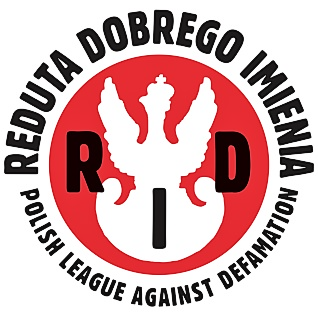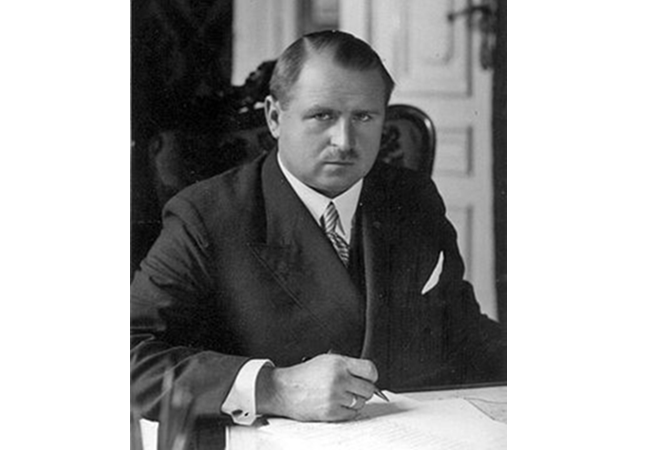Stefan Starzyński was a native Varsovian, born on August 19, 1893, in the city, precisely at 33 Dobra Street. He was the third child of Alfons Starzyński and Jadwiga née Lipska. Stefan’s parents were Polish patriots; his mother taught French, and his father, hailing from a poor gentry background, initially worked as a clerk and later as a craftsman.
Stefan spent his early years in Łowicz, where he attended a gymnasium and participated in his first strike. He later returned to Warsaw and studied at the private gymnasium of Emiliano Konopczyński. Additionally, he pursued education at the Higher Commercial Courses named after August Zieliński, which is now the Warsaw School of Economics.
From the early 20th century, the future Mayor of Warsaw engaged in underground activities. He belonged to the Union of Progressive Youth – Independence, resulting in several arrests by Russian authorities. In 1910, he even spent a month in prison at the Warsaw Citadel. In 1912, he joined the structures of the Riflemen’s Association and the Active Struggle Union.
When World War I broke out, Starzyński became a soldier in the Polish Legions, and after the so-called „oath crisis,” he was interned in the Beniaminów camp. Ultimately, in 1918, he became a member of the Polish Military Organization until Poland regained independence. He then served in the Polish Army, including as the chief of staff of the 9th Infantry Division.
After the Polish-Soviet War, Starzyński, at Józef Piłsudski’s order, assumed the position of Secretary-General of the Polish Evacuation and Special Commission in Moscow, implementing the provisions of the Riga Treaty. He also closely observed the changes occurring in the Soviet Socialist Republics at that time.
Upon his return to Warsaw in 1924, Starzyński began his career in the civil service. He started at the Ministry of Finance, where he became a member of the Secretariat of the Economic Committee of the Council of Ministers. He also authored a pamphlet titled „The Government’s Work Program in Poland,” outlining a program for the administrative and economic reform of the country.
After the May Coup, as a devoted supporter of Piłsudski, Starzyński collaborated with the then-Prime Minister, Professor Kazimierz Bartel. Later, he focused on his work at the Ministry of Finance, where he served as the Deputy Minister from 1929 to 1932. Additionally, he was a Member of the Polish Parliament, representing the Piłsudskiite Non-Party Bloc for Cooperation with the Government, and from 1932 to 1934, he held the position of Vice President of the Bank Gospodarstwa Krajowego.
On August 2, 1934, Starzyński assumed the position of Acting President of the Capital City of Warsaw, essentially becoming the commissioner of Warsaw. This appointment resulted from the political struggle between the Piłsudskiite government and the opposition. It led to the dissolution of the Warsaw City Council and Administration, controlled by Piłsudski’s adversaries. Marian Zyndrama-Kościałkowski initially became the city’s commissioner, later replaced by Starzyński.
His appointment was not well received by the Varsovians. On the contrary, the commissioner took office at a very challenging historical moment. The world was ending the great economic crisis, which also affected Poland, and Warsaw felt its consequences.
Starzyński quickly and energetically set to work, addressing the city’s budget deficit and focusing on the development of its technical infrastructure – plans included the construction of the already famous metro, among others. Many streets were renovated, numerous tramway tracks were laid, and the water and sewage system was expanded. Several schools, important public facilities, and thousands of apartments were also built. The President was a great advocate of the „Warsaw in Flowers” campaign and supported the expansion of the city’s land.
In addition to the above, his unrealized project was the four-year plan for the city’s development, envisioning the construction of new apartments, a sports center, a new power plant, roads, and the aforementioned metro between 1938 and 1942. Unfortunately, he never achieved this grand plan, although in 1938, he ceased to be a commissioner and became the actual President of Warsaw. His dreams of a great capital were interrupted by World War II.
After the outbreak of the war, Starzyński decided to stay in Warsaw and support the spirit and actions of the city’s residents. On September 8, 1939, he was appointed Civil Commissioner at the Defense Headquarters of Warsaw.
On September 23, 1939, just before the capitulation of the city, President Starzyński delivered his last speech, some fragments of which have gone down in history: „I wanted Warsaw to be great. My collaborators and I were sketching plans for Warsaw’s great future. And Warsaw is great. It happened sooner than we expected. And though where parks were supposed to be, there are barricades today, though our libraries are burning, though hospitals are on fire, Warsaw, defending the honor of Poland, is today at the peak of its greatness and glory!”
Four days later, the President was arrested by the Germans and taken to Pawiak, after which there was no trace of him. For many years, Polish researchers believed that Starzyński was murdered in one of the German concentration camps only in 1944. In 2014, the investigative branch of the Institute of National Remembrance, examining the murder of the President of Warsaw, stated: „The collected evidence in the investigation allowed for unquestionable determination that the shooting of Warsaw City President Stefan Starzyński occurred between December 21 and 23, 1939, in Warsaw or its vicinity. The crime was committed by Gestapo officers: Oberscharführer Hermann Schimmann, Hauptscharführer Weber, and Unterscharführer Perlbach. However, it was not possible to unequivocally identify the officials of the German occupying state who ordered the murder of Stefan Starzyński.” Nevertheless, the burial place of the last President of pre-war Warsaw has not been found, and it is likely that it never will be.

